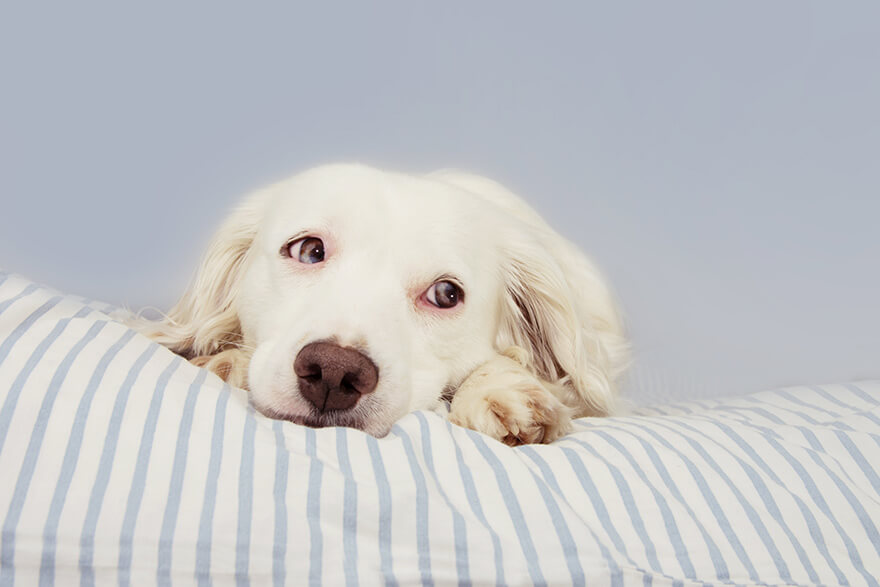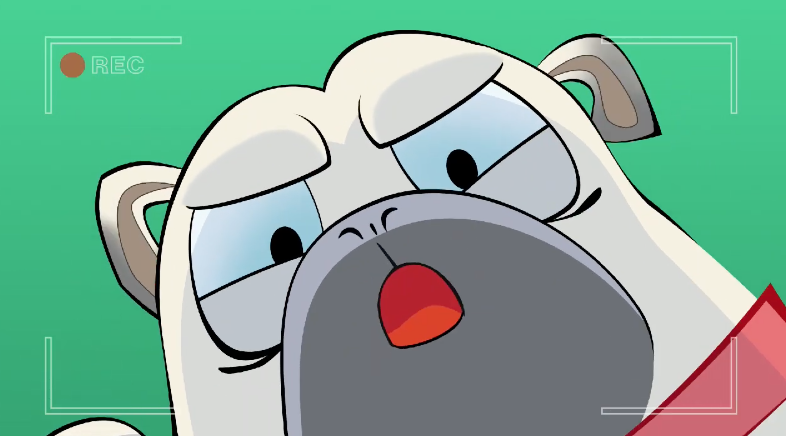

Does My Dog Have Separation Anxiety?
Welcoming a new puppy home isn’t all toys, treats, and trips to the park. A number of issues can arise during the early days of pet ownership. Separation anxiety is just one of many, but it’s an especially important topic for dog lovers to understand.

Writer Animalia Team
6 min read

Welcoming a new puppy home isn’t all toys, treats, and trips to the park. A number of issues can arise during the early days of pet ownership. Separation anxiety is just one of many, but it’s an especially important topic for dog lovers to understand.
Learning about this common and distressing pet care issue can help dog owners deal with it more effectively. Though any pooch can experience separation anxiety, it’s most prevalent in immature dogs and rescue dogs. If your dog is destructive when you’re out or howls and barks all day, it’s likely they are experiencing a bout of separation anxiety.
Why do dogs develop separation anxiety?
Dogs become attached to their human and canine companions and can become agitated when they’re separated from the pack for even short periods of time. As separation anxiety is very common in rescue dogs, some experts theorize that it’s triggered by the loss of an important person in their life. A dog may suddenly develop symptoms if an elderly member of the family dies or a teenager leaves for college. Other triggers include moving to a new house and major changes to a dog’s daily routine. Returning to the office after a long period of working from home, for example, may trigger feelings of separation anxiety.
Common symptoms of separation anxiety
Some separation anxiety symptoms can look like general behavioral problems. If the following symptoms occur when you’re leaving the house or while you’re gone, they likely indicate separation anxiety.
- Barking and howling: An anxious dog may start to bark or otherwise vocalize as you’re leaving the house and continue throughout your absence. Your neighbors won’t be pleased! s
- Behavioral changes or agitation as you prepare to leave: As you go through the routine of leaving, an anxious dog may suddenly exhibit behavioral changes like becoming agitated, aggressive, or withdrawn. Your dog becomes agitated or withdrawn
- Chewing and digging: Excessive digging and chewing not only suggests anxiety, but could leave you dealing with damaged furniture, shoes, clothes, plants, and household objects. Your pet could experience broken teeth, infections, and even poisoning.
- Escape attempts: Some anxious dogs try to reach their owners and reunite by escaping. Escape attempts can be extreme resulting in destruction to your home and injury to your dog
- Inappropriate urinating and defecating: If accidents only happen while you’re absent, they indicate a bad case of separation anxiety.
- Pacing: Pacing back and forth and walking in circles are both likely signs of anxious feelings.
The difference between normal canine behavior and separation anxiety
If any of the above symptoms appear, make sure to rule out any other serious medical or behavioral issues. Generally, if the problems don’t show when you’re present, they’re linked to separation anxiety. Indoor urination in a previously house-trained dog, however, could be linked to incontinence caused by age, infection, diabetes, or kidney disease, or even appear as a side effect of medication. Talk to your veterinarian to rule out other health concerns and discuss options for addressing separation anxiety symptoms.
How to resolve separation anxiety
Your goal should be to gradually get your dog to tolerate or even enjoy alone time. It’s not recommended that healthy adult dogs spend more than six hours alone at one time, but it’s unreasonable to expect that you’ll never leave the house without them. Training a dog to tolerate separation is called counterconditioning, a dog slowly learns to associate a source of anxiety with positive feelings.
Mild anxiety
If your dog has a mild case of separation anxiety try offering up a puzzle toy filled with their favorite treats every time you leave the house. Try to keep the toy out of sight when you’re home. That way, the dog will associate play time with your absence. Keep in mind, however, that a very anxious dog might not want to eat or play while you’re out.
Moderate anxiety
Owners can get their dog accustomed to separation by leaving the house for short periods several times each day. As dogs begin to relax, owners can continue to spend more and more time away. A special dog camera can help owners monitor behavior while they’re away if need be.
Severe anxiety
Owners may need professional help from a Certified Applied Animal Behaviorist or a Certified Professional Dog Trainer to address severe separation anxiety symptoms. Start by identifying triggers, such as putting on your coat or picking up your keys. Begin performing these actions without leaving the house. Gradually, your dog will learn these actions don’t always mean you’ll leave and start to feel less anxious.
Next, start practicing short absences that don’t give your dog enough time to become upset. Teach them to stay in one place while you’re in the room and work up to stepping just out of sight. Once your dog stays for more than a few seconds, reinforce the behavior by giving them a treat or food-stuffed toy just before you step out of sight. They will begin to associate the toy with a “safe,” stress-free separation.
Once your dog is relaxed with a short disappearance, the next stage is leaving the house for a few minutes at a time. It’s important to remain calm as you come and go. Simply give your dog a pat on the head and walk out. Avoid making too much fuss upon your return as well. At every stage in the desensitization program, watch out for signs of stress in your pet. Indicators could include dilated pupils, panting, yawning, trembling, or pacing. If these appear, slow down. Most signs of stress will arise within the first 40 minutes of your absence, so the aim of this stage is getting your dog to cope with being alone for at least this long. Once they are comfortable, build up the duration of your absences in 15-minute increments. After a few weeks of patient routine, they should feel relaxed when you’re absent for up to six hours.
Your veterinarian may recommend a temporary course of anti-anxiety medication or even a more long-term prescription. Never administer any mediation without the express direction of your vet.
Can separation anxiety be prevented?
Taking a proactive approach to training and bonding can help avoid the worst of separation anxiety. If you’re welcoming home a rescue or a puppy, know that you’ll need to take extra precautions. Arrange for controlled alone time early on and try out some of the strategies listed above. It’s never pleasant to be apart from your pet, but the right approach can make sure your absences aren’t unduly stressful for either of you.





We offer the most
comprehensive coverage
out there
car with a spare tire for life’s bumps.
Having Animalia is like a pimped-out
Rolls Royce with a swimming pool
in the trunk.



Get your pet insurance quote
Pet type
- Dog
- Cat
What is your pet's name?
Zip code





